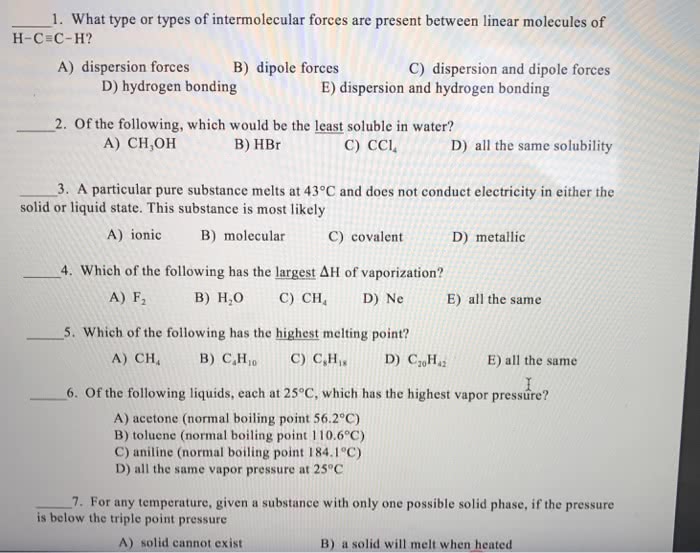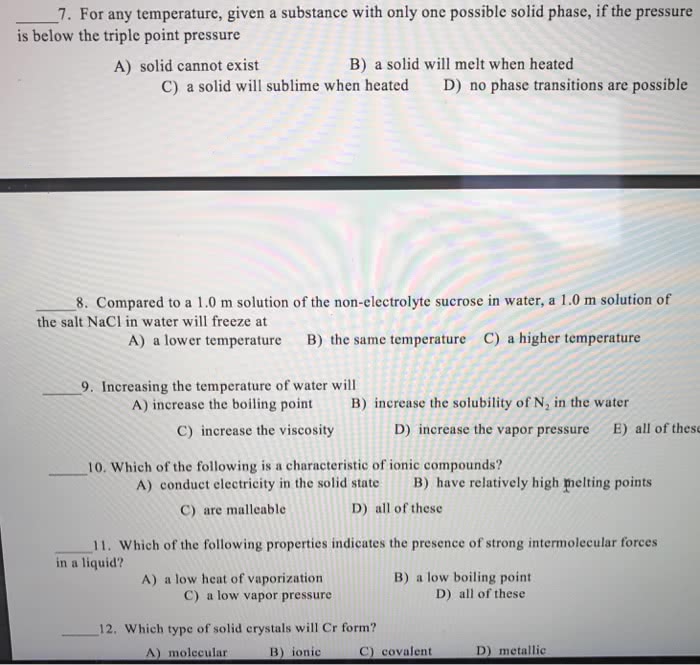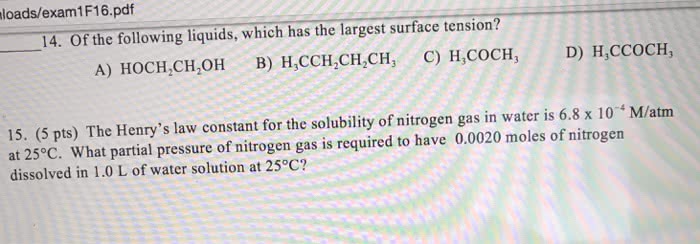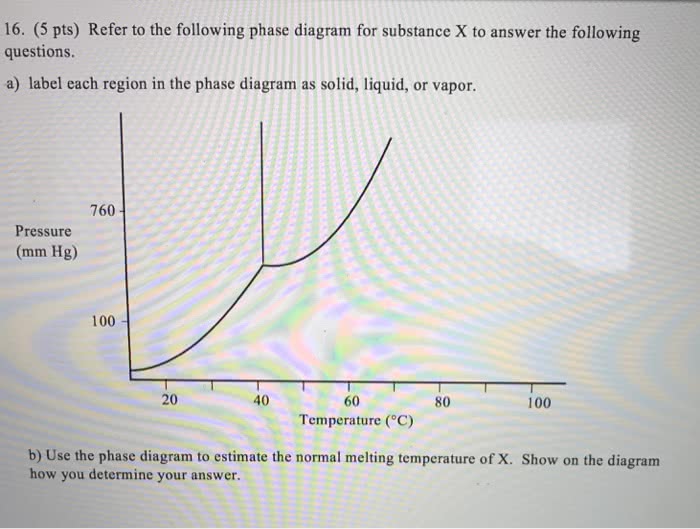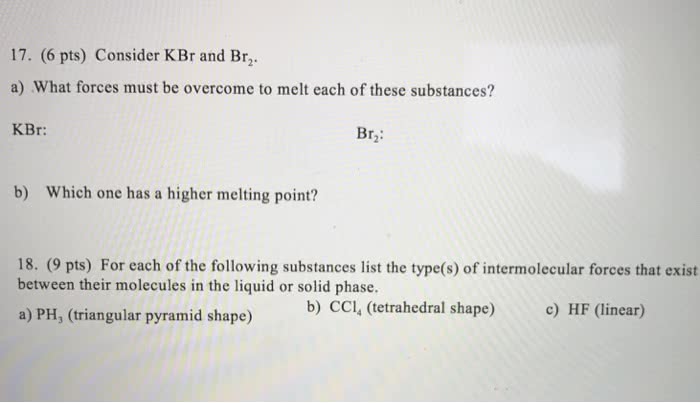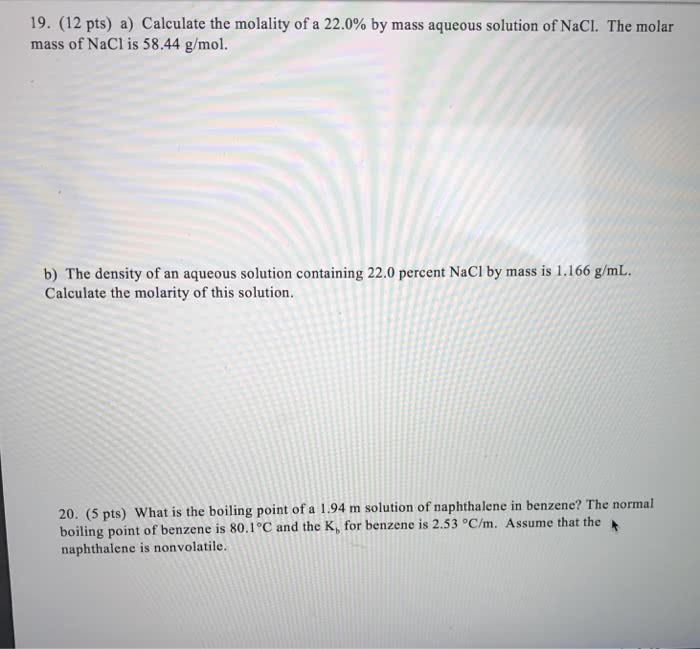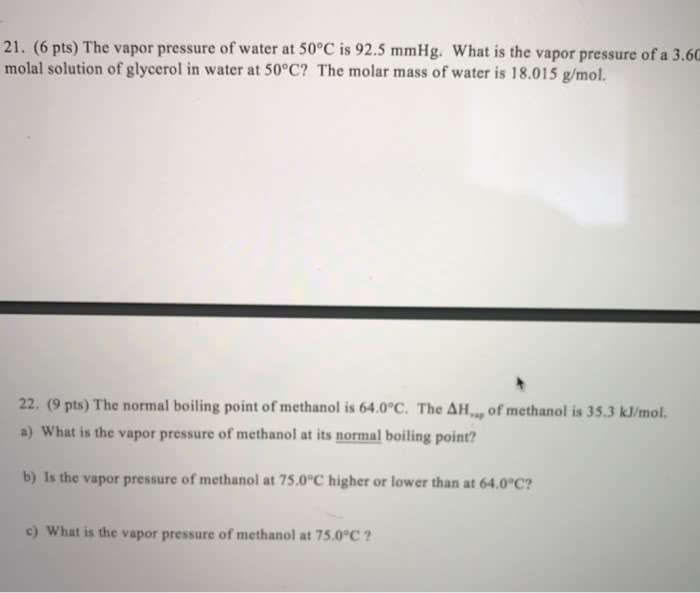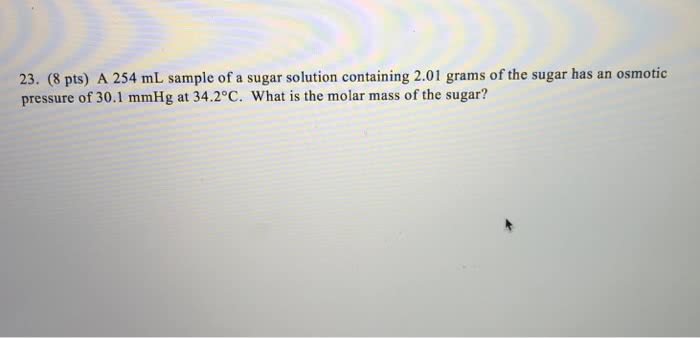CHEM-UA 128 Chapter 10: Atkins CH10
32 views14 pages
31 May 2016
School
Department
Course
Professor
Document Summary
Phase transition: conversion of a substance from one phase into another, the key concept to be understood is the concept of equilibrium. At a particular temperature, at a corresponding pressure, a substance undergoes a phase transition. The (e. g. ) solid and liquid phases are in equilibrium. No change in gibb"s free energy- g = 0. Stotal = 0: at a fixed temperature, as long as there is some liquid present, the vapor exerts a characteristic pressure, regardless of the amount of water present. This is the vapor pressure: volatility is determined by the vapor pressure at ordinary temperatures. High vapor pressure at ordinary temperatures, more volatile the substance: molecular model, consider an evacuated, closed container. There is a dynamic equilibrium between the rate of condensation and evaporation: definition: vapor pressure: Ethanol has a higher enthalpy of vaporization than benzene: the gradient of this curve depends on the enthalpy of vaporization.
Get access
Grade+
$40 USD/m
Billed monthly

Homework Help
Study Guides
Textbook Solutions
Class Notes
Textbook Notes
Booster Class
10 Verified Answers
Class+
$30 USD/m
Billed monthly

Homework Help
Study Guides
Textbook Solutions
Class Notes
Textbook Notes
Booster Class
7 Verified Answers
Related textbook solutions
Chemistry: Structure and Properties
2 Edition,
Tro
ISBN: 9780134293936
Basic Chemistry
5 Edition,
Timberlake
ISBN: 9780134138046
Principles of Chemistry Molecular Approach
4th Edition,
Tro
ISBN: 9780134112831
Principles of Chemistry Molecular Approach
3rd Edition, 2014
Tro
ISBN: 9780321971944
Chemistry: Structure and Properties
2nd Edition,
Tro
ISBN: 9780134293936
Chemistry: A Molecular Approach
3rd Edition,
Tro
ISBN: 9780321809247
Chemistry: A Molecular Approach
5th Edition,
Tro
ISBN: 9780134874371
Principles of Chemistry: A Molecular Approach
4th Edition,
Tro
ISBN: 9780134895741
Chemistry: The Central Science
14th Edition, 2017
Brown
ISBN: 9780134414232
